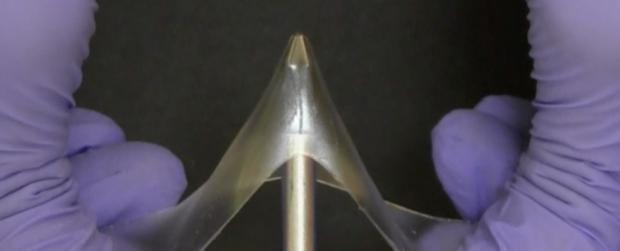
Breaking News
 Who Is ?@NickShirley?? | PBD Podcast | 710
Who Is ?@NickShirley?? | PBD Podcast | 710
 20 Cozy Ways to Celebrate New Year's Eve at Home
20 Cozy Ways to Celebrate New Year's Eve at Home
 The methylation switch: Scientists identify diet that can turn back the cellular clock
The methylation switch: Scientists identify diet that can turn back the cellular clock
 Americans are slaves for the wealthy elite's that write legislation along side corporations...
Americans are slaves for the wealthy elite's that write legislation along side corporations...
Top Tech News
 Laser weapons go mobile on US Army small vehicles
Laser weapons go mobile on US Army small vehicles
 EngineAI T800: Born to Disrupt! #EngineAI #robotics #newtechnology #newproduct
EngineAI T800: Born to Disrupt! #EngineAI #robotics #newtechnology #newproduct
 This Silicon Anode Breakthrough Could Mark A Turning Point For EV Batteries [Update]
This Silicon Anode Breakthrough Could Mark A Turning Point For EV Batteries [Update]
 Travel gadget promises to dry and iron your clothes – totally hands-free
Travel gadget promises to dry and iron your clothes – totally hands-free
 Perfect Aircrete, Kitchen Ingredients.
Perfect Aircrete, Kitchen Ingredients.
 Futuristic pixel-raising display lets you feel what's onscreen
Futuristic pixel-raising display lets you feel what's onscreen
 Cutting-Edge Facility Generates Pure Water and Hydrogen Fuel from Seawater for Mere Pennies
Cutting-Edge Facility Generates Pure Water and Hydrogen Fuel from Seawater for Mere Pennies
 This tiny dev board is packed with features for ambitious makers
This tiny dev board is packed with features for ambitious makers
 Scientists Discover Gel to Regrow Tooth Enamel
Scientists Discover Gel to Regrow Tooth Enamel
 Vitamin C and Dandelion Root Killing Cancer Cells -- as Former CDC Director Calls for COVID-19...
Vitamin C and Dandelion Root Killing Cancer Cells -- as Former CDC Director Calls for COVID-19...
This Glassy Gel Is a Surprising New Class of Material That Heals Itself

Stretchy, strangely adhesive, and able to 'self-heal' if cut, the surprising properties of these gels potentially make them useful for a wider range of applications than commonly-used plastics, which are either hard and brittle or soft and easily torn.
"We've created a class of materials that we've termed glassy gels, which are as hard as glassy polymers, but – if you apply enough force – can stretch up to five times their original length, rather than breaking," says Michael Dickey, materials scientist at North Carolina State University (NCSU).
But as with so many fortuitous scientific discoveries, the goal was never to make a whole new class of subtances, Dickey tells ScienceAlert.
"We stumbled into these interesting materials," he says, when NCSU researcher Meixiang Wang was experimenting with ionogels, materials made of a polymer swollen with an ionic liquid that conducts electricity.
Wang was trying to make stretchable, wearable devices that might be used in a pressure sensor, other medical devices or robotics. Altering the composition, Wang produced a gel that looked at first like a "mundane piece of transparent, flexible plastic" before testing showed it was very hard – but not brittle like other common plastics.
"Once we realized they have remarkable properties, we dove in to understand them better," Dickey says.
The glassy gels are made using an ionic liquid, which is similar to water but made entirely of charged particles, allowing it to conduct electricity. When mixed with a polymer precursor the liquid pushes the polymer chains apart, making the material soft and stretchy. At the same time, the ions are also strongly attracted to the polymer chains, preventing them from separating.



